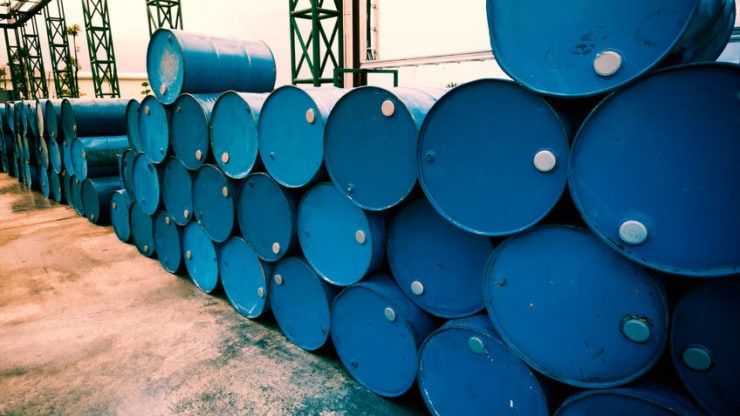Celanese Corporation (NYSE: CE) has faced a series of downgrades and reduced price targets from prominent financial institutions, reflecting growing concerns about the company’s performance in a challenging global environment.
Most recently, on 5 September, analysts at Piper Sandler downgraded Celanese from Overweight to Neutral, lowering the price target from $180 to $150.
This revision was driven by persistent headwinds in two key markets—China and the European Union—that have impacted Celanese’s earnings potential.
Piper Sandler’s updated estimates reflect a significant reduction in expected earnings, with 2024 EPS revised down to $10.06 from $11.50 and 2025 EPS to $12.43 from $13.83.
These challenges are not new. In June and again in August, analysts at Bank of America reduced their price targets for Celanese, first to $144 and then further to $128, highlighting ongoing production issues and rising costs.
The company’s declaration of force majeure in the Western Hemisphere, due to multiple supplier outages, has severely affected its production capabilities, especially in acetic acid and vinyl acetate monomer (VAM), leading to decreased volumes and increased costs.
These supply chain disruptions have compounded the weak demand environment, particularly in the Acetyl Chain segment, which saw a sequential decline in both volume and pricing.
Disappointing Q2
The financial impact of these operational challenges was evident in Celanese’s Q2 2024 results.
The company reported a non-GAAP EPS of $2.38, missing consensus estimates by $0.36, and revenues of $2.65 billion, a 5.4% year-on-year decline that also missed expectations by $100 million.
The quarterly performance was marred by significant external headwinds, including persistent demand challenges, particularly in key markets.
Despite these issues, Celanese managed to deliver an adjusted EBIT of $451 million and an operating EBITDA of $632 million, indicating some resilience due to cost management and strategic actions.
Celanese’s management has been focused on executing a controllable action plan to mitigate the impact of these challenges.
This includes reducing capacity in high-cost locations, integrating acquired businesses into a single SAP ERP system, and optimising the company’s cost structure.
Notably, the Engineered Materials segment showed some resilience, with a 6% sequential increase in net sales and significant margin expansion driven by volume growth and lower raw material costs.
However, these gains were overshadowed by the broader challenges facing the company, particularly in the Acetyl Chain segment.
DuPont’s mobility acquisition concerns
Celanese remains a key player in the specialty chemicals and materials industry, with a broad portfolio of products used across various end markets.
However, the company’s significant leverage, stemming from its acquisition of DuPont’s Mobility & Materials business, remains a concern.
As of Q2 2024, Celanese had a long-term debt of $11.1 billion, with a net debt to EBITDA ratio of 5.3x, indicating a high level of financial risk.
This leverage could constrain the company’s ability to invest in growth initiatives or navigate through economic downturns, making the stock less attractive to risk-averse investors.
Valuation
Celanese is currently trading at a premium compared to its historical EV/EBITDA multiple. Currently valued at 13.86x EV/EBITDA, the stock is significantly above its historical average of 9.2x.
This premium valuation appears unwarranted given the cyclical nature of the chemical industry and the company’s ongoing challenges.
Despite some analysts maintaining optimistic price targets, the risks associated with high leverage and operational headwinds suggest that the stock may be overvalued at current levels.
Now, let’s see what the charts say about the stock’s price trajectory. The technical analysis will provide further insights into whether Celanese’s stock is likely to continue its downward trend or if there are signs of a potential reversal.
Source: TradingView
Price prediction
Celanese’s stock has faced significant resistance above $172 for more than three years now.
The resistance has proven to be so strong that despite the stock attempting to breach it four times during this period, it has failed and reversed quickly.
The most recent of these attempts was in April this year, and the stock has been on a downward journey ever since.
Adding insult to injury, in late August, the stock’s 100-day moving average crossed below its 200-day moving average, confirming the long-term downtrend.
Considering all this, long-term investors should stay away from the stock at current levels. Even short-term traders looking to bet on a brief reversal must exercise caution, as all the short-term indicators are currently deep in the red.
Traders who are bearish on the stock may consider initiating a fresh short position at current levels near $122 or waiting for it to bounce back to $125, but should keep a stop loss above the recent swing high at $134.1.
If the downward momentum persists, it could take the stock to its medium-term support near $112.4, where profits can be booked.
The post Celanese Corp stock price prediction: Will the stock keep on falling? appeared first on Invezz
